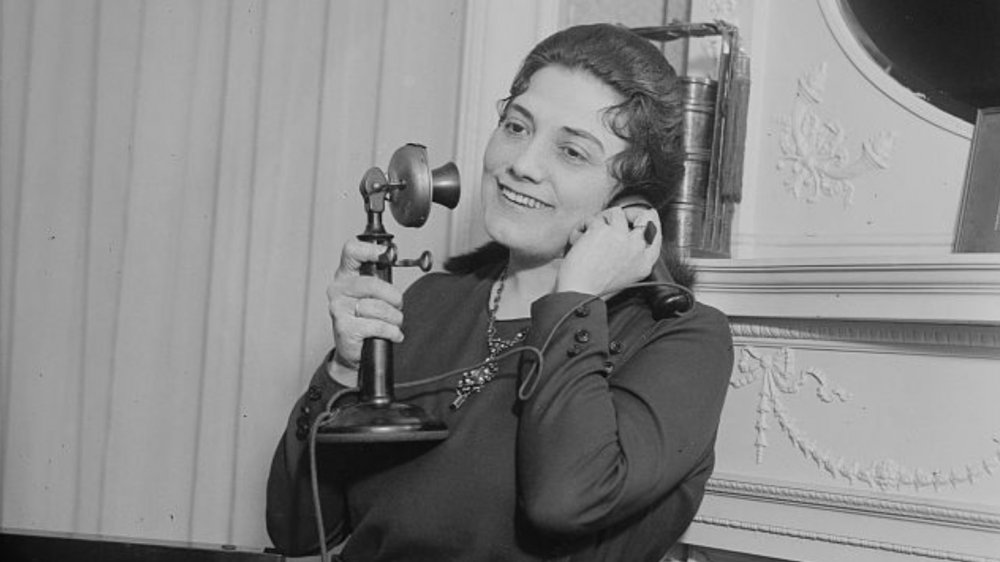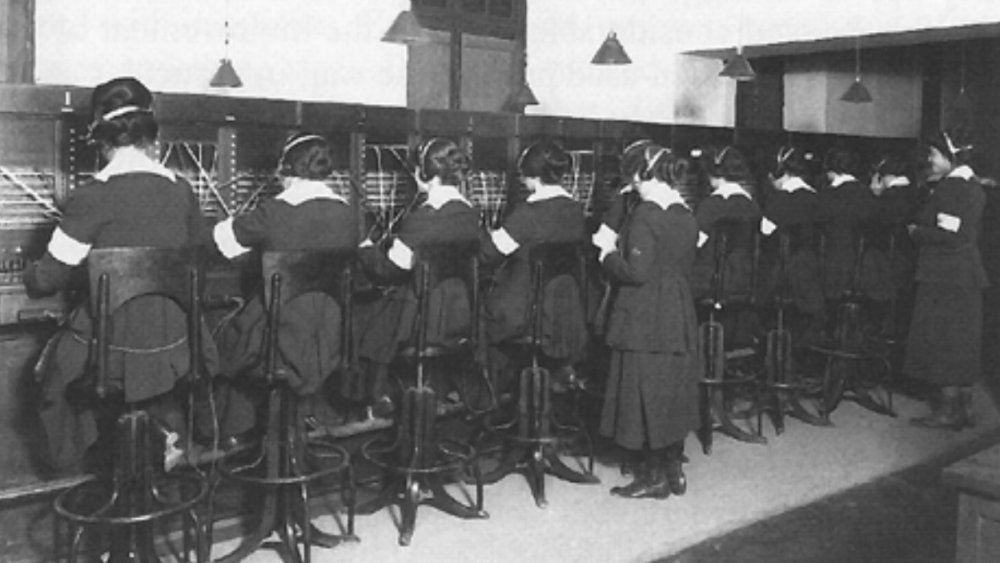The Reason You Weren't Supposed To Use The Phone During The 1918 Pandemic
Pandemics threaten people's lives and upend their way of life. In what might be described as "unnatural selection," the illness enables some companies to thrive, while confronting others with catastrophe, by virtue of whatever goods and services do the most good for people seeking to avoid infection.
You might imagine that in the age before Zoom and smartphones, the telephone seemed like the smartest way to communicate with people from a distance. AT&T imagined that, too, during the 1918 flu pandemic. As Fast Company recounts, AT&T touted Alexander Graham Bell's telephone as a source of solace for the isolated. The company even ran an ad that read, "People who are in quarantine are not isolated if they have a Bell Telephone. The Bell Service brings cheer and encouragement to the sick, and is of value in countless other ways." Apparently, that was true in more ways than AT&T could count. One Louisiana couple decided that being merry wasn't enough, and they actually got married over the phone. Newspapers told people to call to have bulletins read to them over the phone. People called grocery stores to order food so they didn't have to enter the building.
Initially, it seemed like the whole phone thing would go swimmingly, but then, it sank like a solid iron life jacket.
Relying on the telephone was the wrong call
Fast Company explains that old-timey phone companies primarily relied on human operators, young women in particular, to connect callers to the correct recipient manually. Automatic dialing had existed since the 19th century but hadn't become widespread. Unfortunately, the flu was extremely widespread, and thus posed a serious risk to those operators. For instance, on October 22, 1918, about 2,000 operators for the New York Telephone Company were ill and unable to work. That amounted to about a third of the company's workforce, who presumably couldn't even call in sick because it would endanger the remaining operators.
Overwhelmed by flood of customers, and a lack of operators to handle them, the New York Telephone had to limit its services. Payphone availability was cut by half, and customers received cards in the mail asking them to restrict their phone usage to emergency situations. AT&T implored people to use their phones sparingly. Newspapers began refusing to return phone calls, and health officials in Sacramento advised the public to handle their affairs "in the open air, provided that they all wear masks." In a twist no one saw coming, using the telephone was the wrong call after all.

